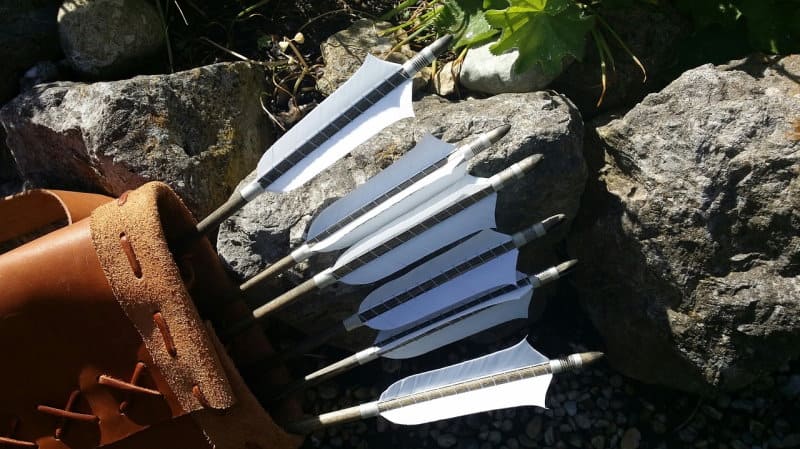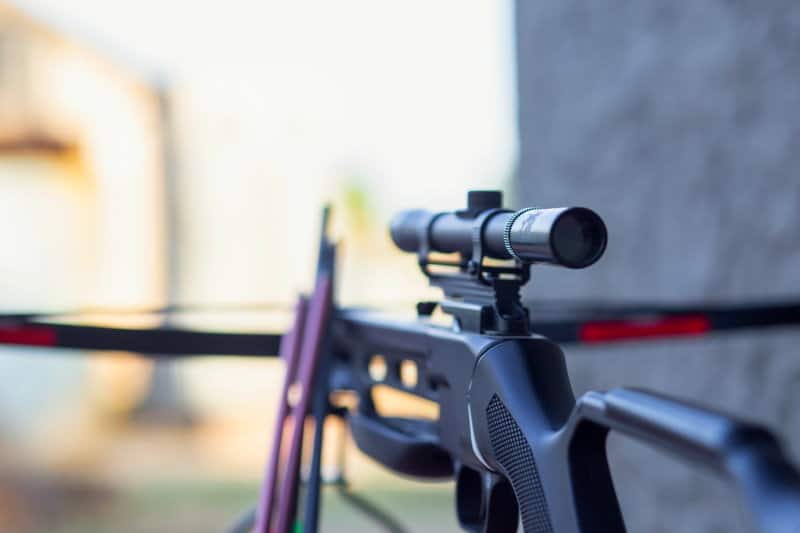Whether you’re doing some target practice or bowhunting big game, it’s unlikely that some rainfall is going to hold you back.
Sure, your vision becomes obscured and the arrows feel a little heavier to shoot, but as your bow becomes drenched in water, you’ve probably asked yourself:
Will it hurt my bow to get wet?
It won’t hurt your bow to get wet. In fact, most bows can be used under the rain without running into any problems. However, there are some things that you need to be aware of, like how to perform proper maintenance after bowhunting in the rain and which parts of your bow are most susceptible to damage.
In this article, I’ll cover what happens if your bow gets wet, how to protect it from the rain, and how to inspect and maintain your bow after using it in rainy conditions.
Let’s get started!
What Happens If Your Bow Gets Wet?
You can shoot your bow in the rain as much as you want. Most bows are waterproof, so they won’t be damaged if they get wet.
If you own a compound bow, rainfall should be the least of your concern. Compound bows are made of plastic and anodized aluminum, which makes them completely waterproof.
Wooden bows are much more susceptible to rainfall damage, but thankfully, they’re coated with a layer of wax-resin, which is highly resistant to water damage.
However, there are parts in your bow that are sensitive to the rain, like the little bolts and screws. These parts are made of metal and can easily rust if you don’t pay attention to them.
You should also frequently inspect your wooden bow to check if it needs an extra layer of protection. Waxing your bowstring regularly is essential, but you may also need to give your bow a fresh coating every few years.
Bigger parts, like the limbs, axles, and the riser, won’t be affected by rain. With that said, you have to dry your bow completely before storing it.
Storing your bow when it’s still wet is a recipe for disaster. The water will cause the bolts and screws to rust, which may render the whole bow unusable.
What Happens If Your Arrows Get Wet?

Your arrows won’t be damaged from the rain, but they might make it harder for you to shoot them.
For example, the water can soak up the feathers in the fletchings and make your arrow heavier. This will significantly impact your precision and make it harder for you to hit your targets.
If you live in an area where it constantly rains, it’s best if you buy arrows with plastic fletchings to avoid this problem. The plastic fletchings won’t soak up with water, and your performance won’t be affected.
Another tip is to avoid taking your sweet time before shooting your arrows. By doing so, the rain won’t have enough time to drench your arrows and make them harder to shoot.
How to Prepare for the Rain

Do you know the feeling when it’s pouring and all of a sudden you can’t hit any of your targets?
This isn’t just the rain affecting your vision; it’s your bowstring getting drenched in water.
As your bowstring becomes heavier, it’ll get progressively harder for you to land your shots.
This is why you need to frequently wax your bowstring. This will keep it dry for longer, protect it from water damage, and enable you to land your shots accurately.
You don’t even need to send it to a professional; waxing your bowstring is extremely easy!
If it starts raining and you feel your bowstring getting heavier, pluck it a few times before shooting.
Keep Some Plastic Bags Handy
There are some extra steps you could take before shooting in the rain that would make the experience much more tolerable.
If you don’t want your wooden bow to get drenched with water, how about covering it with a plastic bag?
This simple trick will protect your bow and all the little screws and bolts. In addition to this, it’ll also cover your quiver and keep all your arrows safe.
Cover Your Sight
Having a sight becomes a huge nuisance during rainfall. Just a few droplets can mess up your vision, and if you’re constantly wiping it, you might accidentally scratch it.
This is why I suggest you use a sandwich bag or a small plastic bag to keep your sight covered. Only take the bag off when you’re taking a shot, and cover it again afterward.
Lastly, you don’t want to use any towel to wipe your sight. Instead, buy some dedicated wipes that are gentle on the optics and won’t get it smudged.
What to Do If Your Bow Gets Wet
The most important thing is to never store your bow when it’s still wet. This will absolutely wreak havoc on your bow, even if it’s coated in wax resin or made of plastic.
When you’re done with your bow, wipe down all the parts before storing them. This includes the screws and bolts that are susceptible to rust.
You can use a paper towel to wipe down your bow, but drying your bow alone isn’t enough.
Using some oil and a toothbrush, gently start lubricating the screws, bolts, sight, and limb to make sure it can withstand another practice session in the rain.
Finally, make sure there’s no water in the quiver, and wipe your arrows one by one until they’re completely dried.
What Happens If You Dry Shoot a Bow?

Dry-shooting is one of the worst things you can do to your bow. If you don’t know what dry-shooting is, it’s basically drawing your bow and shooting without having an arrow lined up.
When you dry-fire your bow, an incredible amount of potential energy is created in the bow, namely in the limbs and the riser.
The limbs flex in anticipation of diverting all of this energy into the arrow. This is why when you fire an arrow, you usually feel the vibration throughout the whole bow.
Now, take the bow out of the equation, and all of this energy will stay in the bow rather than transferring into the arrow.
This will cause your bow to become damaged, and possibly, cause a serious injury to you or a bystander.
If your bow has been dry-fried, you shouldn’t use it again before taking it to a professional. There, your bow will be inspected and any damage will be fixed.
Similarly, if you’ve dry-fired your bow and see any cracks or signs of damage, don’t attempt to fix it yourself.
In Conclusion
Rainfall can definitely impact your performance, but thankfully, it won’t damage your bow.
All you need to do is dry it completely after use, oil the metal parts, and regularly wax the bowstring.
So, we know that we can take our bows outside when it’s pouring, but what about archery targets? Can they withstand some rainfall? Click here to find out!

